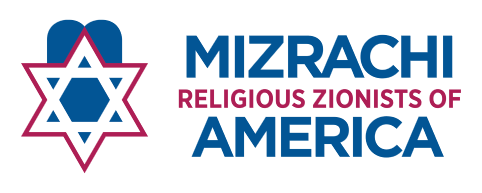The attitude of the wise men of Yisrael towards a flag is not uniform. In the past we discussed the positive approach of Rabbi J.B. Soloveithik to the flag of Israel. Rabbi Moshe Feinstein, on the other hand, felt that the flag has no importance. In response to a question if one is permitted to hang an Israeli flag in a synagogue, he wrote that it is not prohibited but that it is “a vain and silly act,” and that it would be best to remove it – except that this should not become an issue for a dispute.
Rav A.Y. Kook had an opportunity to express his opinion about flags and banners when the King of England handed over the banner of the Hebrew Brigades that fought with the English in the Second World War, so that it would be placed in a synagogue in Israel. And the banner was indeed put on display in the “Churva” synagogue in Jerusalem in 5685 (1925). In the local newspapers, this event was described as a historic event in the history of Eretz Yisrael, the likes of which had not been seen “for the last two thousand years.” The dedication of the flag read, “With a feeling of national pride and self-awareness, the pioneers of the Hebrew Brigades took an oath to guard over their Hebrew flag… And this flag, the banner of the Hebrew nation, is now being returned to its rightful place, to the center of the Hebrew nation in Jerusalem. This flag was sanctified by the Hebrew Brigades with personal sanctity – sanctity of blood… The heart expands from joy, and the eyes shed tears of happiness. We now have a flag of our own!”
The people also showed great enthusiasm. A crowd of more than ten thousand came to cheer when the banner was paraded through the streets of Tel Aviv. The same thing was repeated in Jerusalem, where it was taken in a parade, accompanied by music from the police orchestra, and brought to the Old City of Jerusalem. The Arab press was angry, and the Arab Action Committee warned the British High Commissioner, Herbert Plumer, that if he did not cancel the planned ceremony they would not be responsible for the consequences. Plumer’s reaction was: “Gentlemen, nobody is asking you to be responsible for this, I am responsible – and I will be there.”
Rav Kook took part in the ceremony, spoke, and even composed a special prayer for the occasion. He began his sermon with the Midrash on the verse, “Every man at his banner, according to families” [Bamidbar 2:2]. When the Holy One, Blessed be He, was revealed on Mount Sinai, “tens of thousands of angels descended with Him, and each one displayed different banners. And Bnei Yisrael also felt a desire to have their own banners. The Holy One, Blessed be He, said to them, I swear that I will fulfill your request. ‘May we be happy in Your salvation, let us unfurl our banner in the name of G-d, and let G-d fulfill all your requests!’ [Tehillim 20:6]. And the Holy One, Blessed be He, immediately made a decree, and he told Moshe to make them banners as they wanted.”
Rav Kook understood the banners mentioned in the Midrash in a simple way, and thus he did not object to the flag being brought into the synagogue. In his opinion, the flag symbolizes the beginning of the redemption and the national yearning and our aspiration to become a nation of priests. For him, the soldiers who carried the flag were “holy armies, and they appeared to me like the angels.” In addition, the banner is a reminder of the holy people who gave up their lives in the effort to take over Eretz Yisrael. The flag in general symbolizes the “beginning of the flowering of our redemption.” The above verse is appropriate for the banner, and Rav Kook ended his speech by quoting it again: “May we be happy in Your salvation, let us unfurl our banner in the name of G-d, and let G-d fulfill all your requests!”
